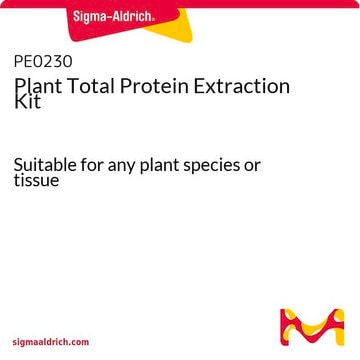PP2369
YFP Vector Set
plasmid vectors for molecular cloning
Sinónimos:
cloning vector, expression vector, molecular cloning vector, plasmid, plasmid vector, vector
About This Item
Productos recomendados
Formulario
buffered aqueous solution
selección de bacterias
ampicillin
Origen de replicación
pUC (500 copies)
Promotor
Promoter name: CMV
Promoter activity: constitutive
Promoter type: mammalian
Ubicación del gen reportero
2nd promoter
MCS
gen reportero
YFP
Condiciones de envío
ambient
temp. de almacenamiento
−20°C
Descripción general
This pack allows you to determine the best configuration for the Yellow Fluorescence Protein (a non-Aequorea variant called Kringle YFP) reporter gene and to optimise expression for your specific needs. Each component plasmid contains the yellow fluorescent reporter regulated in a different way - in the MCS under the CMV promoter, under an IRES or regulated by your own chosen promoter, or regulated by independent promoters either immediately downstream of the MCS (sharing a polyA with the gene inserted into the MCS) or in a different part of the plasmid. This pack should enable you to compare different strategies for yellow fluorescence expression and chose the one that best suits your needs.This plasmid set has been designed to be compatible with a range of cloning techniques. The multiple cloning site contains a range of standard commonly used restriction sites for cloning. Using these sites genes can be inserted using standard cloning methods with DNA ligase. Other methods such as ligase independent cloning (LIC) Gibson Assembly InFusionHD or Seamless GeneArt can also be used and because all of our plasmids are based on the same backbone the same method can be used for cloning into all of our catalogue vectors.
Multiple cloning site notes: There are a few important sites within the MCS. These include the NcoI site the XbaI site and the BsgI and BseRI sites. The NcoI site contains a start codon that is immediately downstream of both a Kozak and Shine-Dalgarno ribosomal binding site. These allow for optimal positioning of genes when the start codon is placed in this location. If this is not required and you wish to use a downstream site for gene cloning you can remove the NcoI site by cleaving the plasmid with KpnI. The XbaI site contains a stop codon. This stop codon is positioned in a specific position in relation to the BsgI and BseRI sites that are immediately downstream. When either BseRI or BsgI cleave the plasmid they produce a TA overhang from the stop codon in the XbaI site that is compatible with all of our peptide tag plasmids cut with the same sites. BseRI and BsgI sites are non-palindromic and cleave a defined number of bases away from their binding site. Whenever we clone a gene into our multiple cloning site we always position the start and stop codon in the same positions in the MCS. If the start and ends of the genes are not compatible with NcoI and XbaI we extend the sequence to the nearest external sites but keep the start and stop codons locations consistent.
Transcription Termination: These plasmids contains three alternative transcription terminators for mammalian bacterial and bacteriophage (T7) expression. This means that only the promoter needs to be changed to alter the expression system you are using. We sell multiple promoters that can be used in each of these systems. The presence of each terminator does not reduce expression in the alternative systems.
Nota de análisis
Otras notas
Información legal
Los componentes del kit también están disponibles por separado
- OGS611PSF-CMV-PGK-KRYFP - YFP MAMMALIAN PGK PROMOTER PLASMID, plasmid vector for molecular cloningSDS
- OGS513PSF-CMV-UB-KRYFP - MAMMALIAN YFP REPORTER VECTOR, plasmid vector for molecular cloningSDS
- OGS521PSF-CMV-FMDV-KRYFP - FMDV IRES YFP REPORTER VECTOR, plasmid vector for molecular cloningSDS
- OGS614PSF-PA-PROMMCS-KRYFP - PROMOTERLESS MULTIPLE CLONING SITE YFP PLASMID, plasmid vector for molecular cloningSDS
Producto relacionado
Código de clase de almacenamiento
12 - Non Combustible Liquids
Punto de inflamabilidad (°F)
Not applicable
Punto de inflamabilidad (°C)
Not applicable
Elija entre una de las versiones más recientes:
Certificados de análisis (COA)
It looks like we've run into a problem, but you can still download Certificates of Analysis from our Documentos section.
Si necesita más asistencia, póngase en contacto con Atención al cliente
¿Ya tiene este producto?
Encuentre la documentación para los productos que ha comprado recientemente en la Biblioteca de documentos.
Filtros activos
Nuestro equipo de científicos tiene experiencia en todas las áreas de investigación: Ciencias de la vida, Ciencia de los materiales, Síntesis química, Cromatografía, Analítica y muchas otras.
Póngase en contacto con el Servicio técnico








